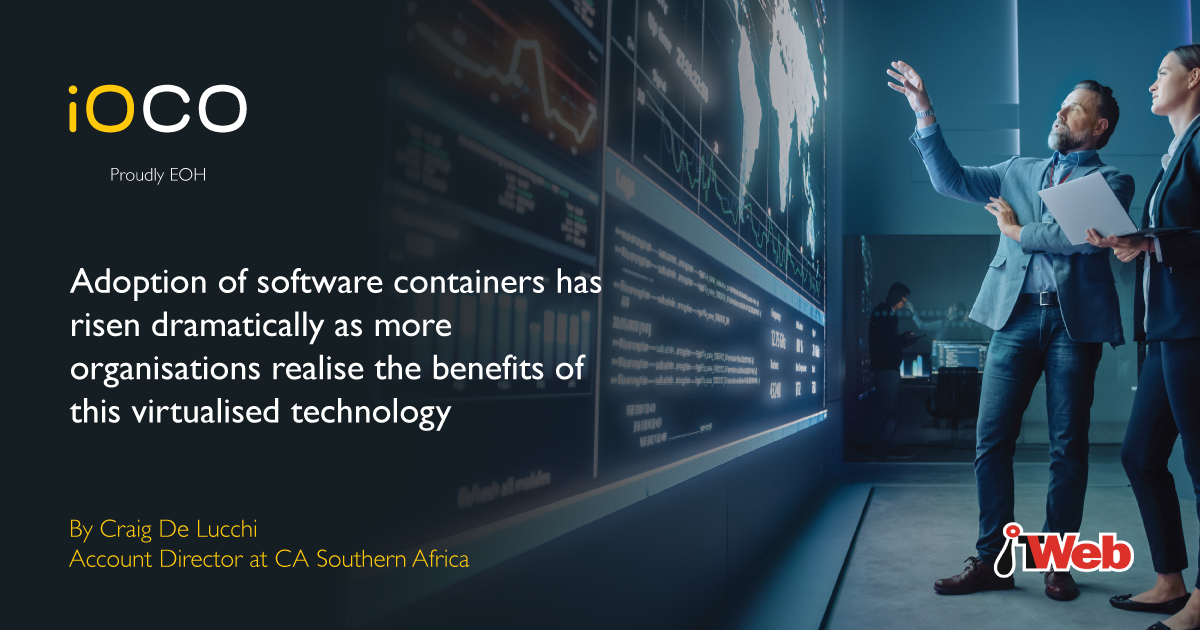Container security is a fairly new technology, especially when viewed in the context of the speed of light technology changes in the fourth industrial revolution (4IR). Container technology itself is a topic that many security practitioners continue to find confusing, but its use is spreading fast, says Craig De Lucchi, Account Director, CA Southern Africa.
“Let’s unpack, what does containerisation mean? While definitions differ, but only slightly in the wording, they all come down to the same conclusion and that is that containerisation is a form of operating system (OS) virtualisation where applications that use a shared OS run in isolated user spaces, called containers. Software containers are lightweight, standalone, executable packages of software that include everything required to run them. Containers include code, runtime, settings, system libraries and tools and can be used with both Linux and Windows-based applications. By isolating software from its surroundings, software containers enable code to run consistently, regardless of the environment in which they are operating. In short, an application container is a fully packaged and portable computing environment.”
De Lucchi confirms adoption of software containers has risen dramatically as more organisations realise the benefits of this virtualised technology; however, despite the inherent value they add, software containers also bring significant risks. Lack of visibility into containers means security teams are often unable to discern whether there are issues within the code. Moreover, containers are rarely scanned for vulnerabilities before or after being deployed to production.
How to secure a software container – calling all developers
Let’s talk to the developers in a world where security skills are no longer optional for them.
There are several steps that developers can take to help secure software containers. These include enforcing the use of trusted container image repositories, eliminating image clutter by continuously monitoring what’s inside containers and using secret management tools to protect sensitive data. Scanning software containers for vulnerabilities is also critical.
Gartner Security & Risk Management Summit 2022 provided a number of recommendations and added clarity by segmenting container security into three sections:
- Securing container images;
- Securing the orchestration plane; and
- Securing containers at runtime.
“So, in a business landscape constantly under threat from cyber attack vectors, the real issue to focus on is security. The upside of the coin is that while the security implications appear increasingly intense, it must be noted that solutions are evolving just as fast,” concludes De Lucchi.
By Craig De Lucchi, Account Director, CA Southern Africa.



